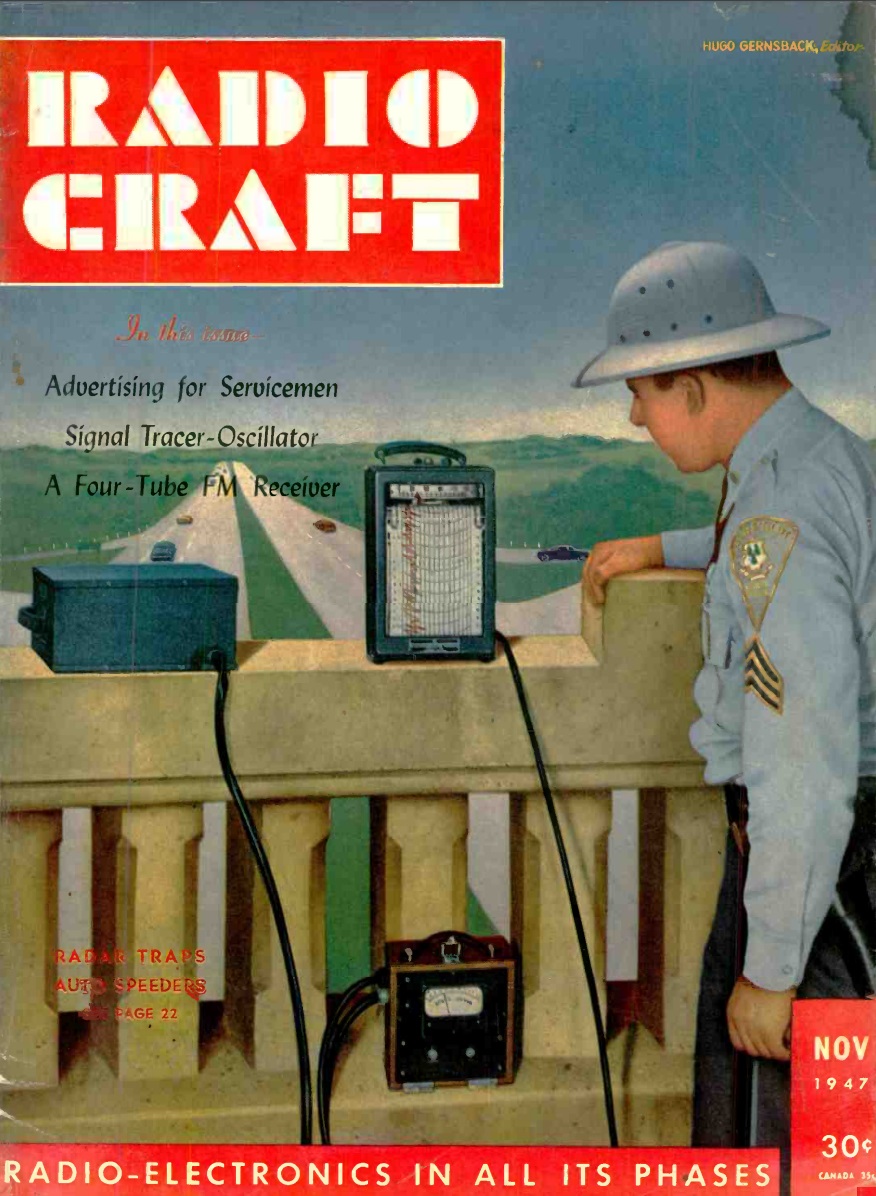 Seventy-five years ago this month, the cover of Radio Craft magazine for November 1947 showed this Connecticut State Police officer studying traffic speeds courtesy of a radar, the Electro-Matic Speed Meter from Eastern Industries Ltd. of Norwalk, CT.
Seventy-five years ago this month, the cover of Radio Craft magazine for November 1947 showed this Connecticut State Police officer studying traffic speeds courtesy of a radar, the Electro-Matic Speed Meter from Eastern Industries Ltd. of Norwalk, CT.
The complete unit consisted of three parts, the transmitter-receiver with built-in antenna, the indicator-amplifier, and a power supply. The radar used the doppler effect, since the reflection from an incoming object shortened the wavelength, and this could be measured and correlated with speed.
A number of the units were being tested, and the magazine noted that those tests would probably result in the adoption of radar speed control throughout the state.
According to the magazine, Connecticut speeders protesting that they were only doing forty would soon find themselves arguing with radar.
The complete apparatus weighed in at only 45 pounds, and could operate on either 120 volts AC or 6 volts DC. The radar signal on 2455 MHz was about 0.1 watt. The magazine noted that the radar required an FCC station license, but since it was so easy to operate, no operator’s license was required.
